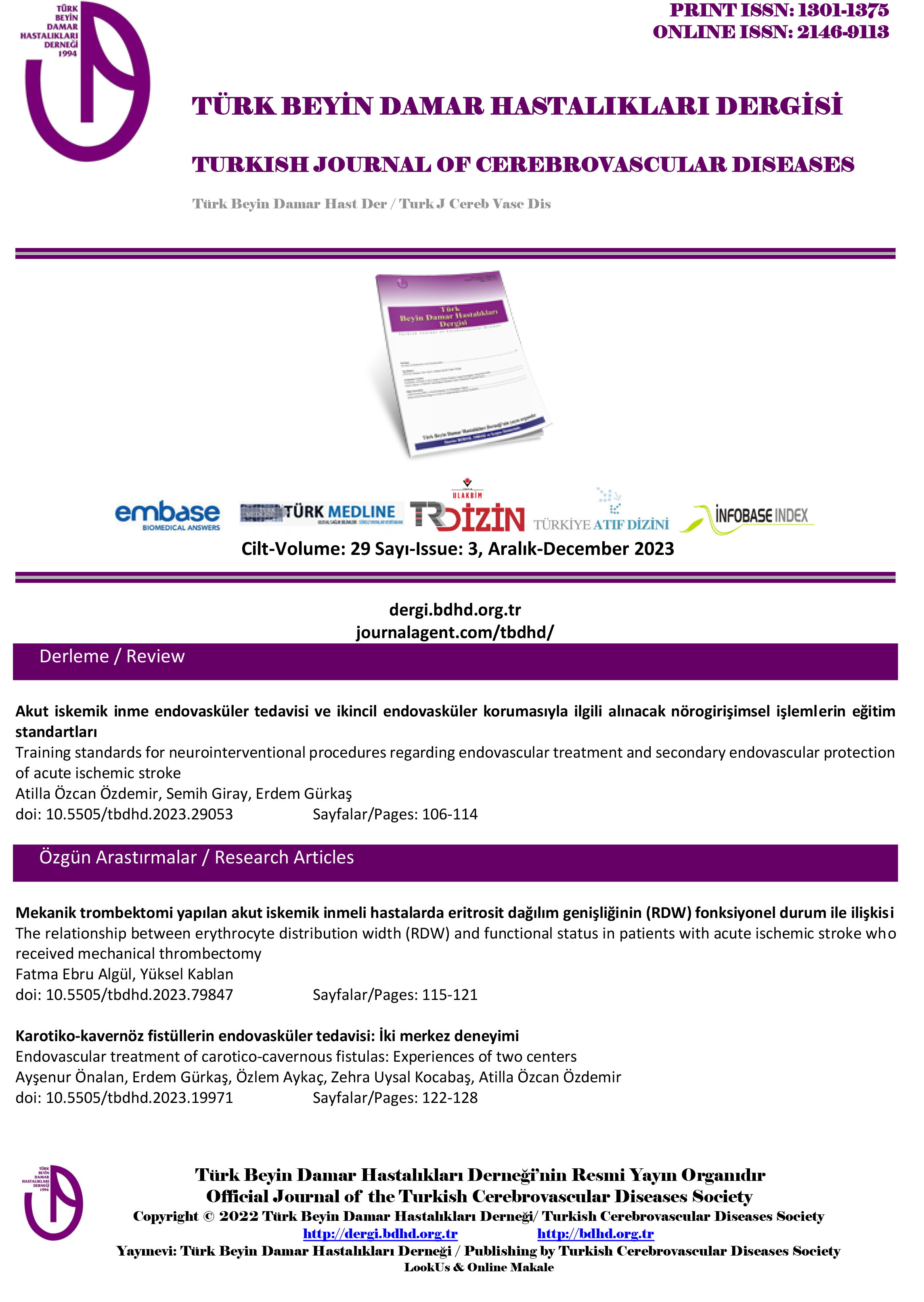DETERMINANTS of MORTALITY DUE TO CEREBROVASKULAR DISEASES:EVALUATION OF 358 CASES
Recep ALP1, Selen İLHAN ALP2, Sevde KOÇ3, Hülya ERDOĞAN3, Zeynep YILDIZ3, Yılmaz PALANCI4, Ülkü TÜRK BÖRÜ312
3
4
Indroduction: Cerebral Vascular Disease (CVD) causing death or disability, has gained promising advancement in terms of treatment. However the new treatment has limited application on patients. In order to prevent adverse affects of CVD in both individual and society risk factors associated and preventive measures should be determined. Determination of the effect of risk factors and routine laboratory findings may give clue on treatment process and prognosis. In fact that this study determination of known risk factors and routine laboratory findings on mortality in CVD. Materials and Methods: The study involved 358 CVD patients. Patients were examined using computerised brain tomography, Glasgow coma score and routine laboratory test. Risk factors investigated were age, gender, family history, smoking, hypertension, diabetes mellitus, hypercholesterolemia, heart and peripheral vascular diseases. Types of CVD were Transient Ischemic Attack (TİA), ischemic infarct and intra cerebral haemorrhage. According to vascular localisation, total anterior circulation infarct (TACİ), partial anterior circulation (PACI), posterior circulation infarct (POCİ), and lacunars infarct. Patient informations were collected either at routine policlinics following or by telephone. Results: Of 358 patients, 168 were male 190 were female. The mean age was 67.5 years. According to CVD types, 11 cases had TİA, 158 had ischemic and 89 had intra cerebral haemorrhage. Of the cases 78% had hypertension, 20,2% had hypercholesterolemia, 27,7% had diabetes, and 40% had heart diseases. A total 79 (22%) of patients was died in the first 10 day in the hospital. The number patient died in first month 3rd, 6th, and 12th months of onset were 15, 18, 12 and 8 respectively, accounting for total of 123(34,3%) deaths in the first year. The majority of deaths occurred in first month of clinical onset. The average age of those died was 70,6 years. The mortality rate was high in elderly patients. Of the patients died 51(41, 4%) were male, 72(%58, 6) were female. Numbers of deaths were high in female patients but this was not statistically significant. When deaths were evaluated according to types, 78 had ischemia, 43 had haemorrhages and 2 had TİA. Death rate was high in haemorrhagic CVD cases (p<0, 05). According to vascular localisation, number of deaths were higher in total anterior circulation infarct cases (p<0, 05). Mortality was higher in those with Glasgow coma scores above 9 (p<0,05).Laboratory findings of death patients revealed in increased C-reactive protein(CRP) leukocyte court and sedimentation rate (p<0,05). Conclusion: Factors associated with CVD were older ages, intra cerebral haemorrhage, and ischemic affecting large vessels. Those died of CVD had higher leukocyte count, CRP and sedimentation rate.
Keywords: Cerebral vascular diseases, mortality, risk factorsMakale Dili: Türkçe










